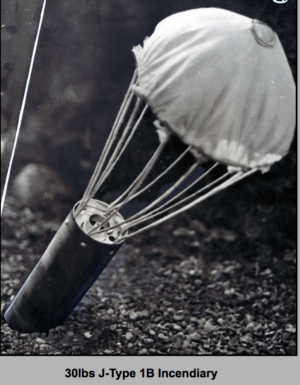In my last post I mentioned the command-wire IED used in Salonika to bring down a German Fighter ace, and that “Lt Finch” of the Army Ordnance Corps designed the device. Well, it turns out that Lt Finch was a remarkable character – and since this blog sometimes veers into stories of interesting characters, such as “Bimbashi Garland” (another former member of the Army Ordnance Corps) I think his story is worthy of a brief recount here. I won’t tell the whole piece about his device because it’s going to be shortly included in a book by a former colleague on the exploits of the Ammunition Trade in the British Army – so you’ll have to wait for that for technical details of the device and read it in his book. I’ll let you know when it is published.
- George Finch was born in Australia in 1888. He was brought up in Paris by an eccentric mother.
- He was an outstanding piano player and nearly became a concert pianist. He was a clearly a born adventurer and scaled both Beachy Head and Notre Dame cathedral (at night) illegally.
- He decided to study physics and chemistry in Zurich so sat down and learned German in 4 months to enable this. He passed out with the highest marks, winning a prize. One of his lecturers was Einstein.
- While in Zurich he climbed mountains, with his brother Max, making a number of “first ascents” on some serious mountains, inventing modern alpinism, which eschewed the traditional use of local guides. He invented several mountaineering pieces of equipment, still in use today, including lightweight anoraks and down filled jackets.
- He was very critical of “traditional” British mountaineering, and the use of guides. He believed that modern alpinists should not use guides and be capable of leading serious pitches and choosing routes. In may ways he was a forerunner of post-WW2 British alpining techniques – just two men on a mountain, pitting their own skills together against the elements. But the British Alpine Club took decades to forgive him, and his somewhat abrasive character.
- In 1912 he was appointed as a research chemist at Woolwich Arsenal Laboratory (the same Lab that Garland graduated from 8 years earlier). He also started work at Imperial College London, where he later became a distinguished Professor.

Finch in the laboratory
- In 1914 he joined the Army as a Gunner Officer and ended up in Salonika where he worked for the Ordnance Department, managing ammunition stocks as an Ammunition Technical Officer. He was intimately involved in a major project to recondition many thousands of crucial artillery rounds that were exuding explosives.
- He received great credit for his careful professionalism in designing the balloon explosive device discussed in my last post and about which more details will be published in a future book by JB.
- In 1921 his role in a Mallory-led reconnaissance expedition to Everest was blocked by committee men in the Alpine Club. At the time he was the foremost alpine mountaineer in the country. He grew his hair long, wouldn’t wear a hat unless he had to, and hadn’t been to public school, so he didn’t fit the “establishment” Alpine Club.
- But in 1922 he was part of Mallory’s first proper Everest expedition. He invented the oxygen system used in this climb and subsequently by Hilary and Tensing in 1953. He got as high as 450m from the summit in 1922 (higher than anyone ever before) but turned back when his partner became ill. He could have been first to summit were it not for this drama
- In WW2 he ran a team improving British fire brigades responding to German Luftwaffe incendiary bomb attacks by looking at the physics of how fire spreads. He conducted detailed post bomb analysis of incendiary attacks as a precursor to developing new firefighting techniques. Later from an office in Whitehall he developed the “J-Bomb”, a much improved incendiary munition – 800,000 of which were dropped by Bomber Command from 1943.
-

- The J-Bomb produced a 2 foot wide by 15 foot long white flame which burned for one minute or more.
- The J-Bomb designed by Finch eventually used a liquid fuel/metal powder mix which is sort of interesting in terms of modern munition design. He also helped the Americans develop a similar system, tuned for Japanese buildings and was much praised by the Americans for his pragmatic scientific contributions. By strange coincidence his Office in the Old War Office Building in Whitehall was later occupied 50 years later by an Ammunition Technical Officer.
- He became a well respected Professor at Imperial College. In the 1950s he became the scientific adviser to India, and redesigned his oxygen system for Hillary’s ascent of Everest in 1953. He was a fellow of the Royal Society and awarded the Hughes Medal (other winners included Nils Bohr and Fermi). I believe he was a member of the Nobel Prize for Physics Committee.
So an interesting chap, to say the least. He had three wives. During the WW1 (as a young Captain) he had returned from Salonika and found out his first wife pregnant. It was ten months since he was last home…. and she told him she was having an affair with a Lt Col. He caught a ferry to France, found the Colonel, “thrashed him” and cracked on with a new girl.
So, our erstwhile Gunner/Ordnance Corps Ammunition officer was someone quite remarkable. You can read more about his mountaineering life in the book ” The Maverick Mountaineer” .
Sua Tela Tonanti.

What a story! What a man!
OK, where can we find the book about the Ammunition Trade?
Author
I know a history of the trade is being written. Not quite published yet.